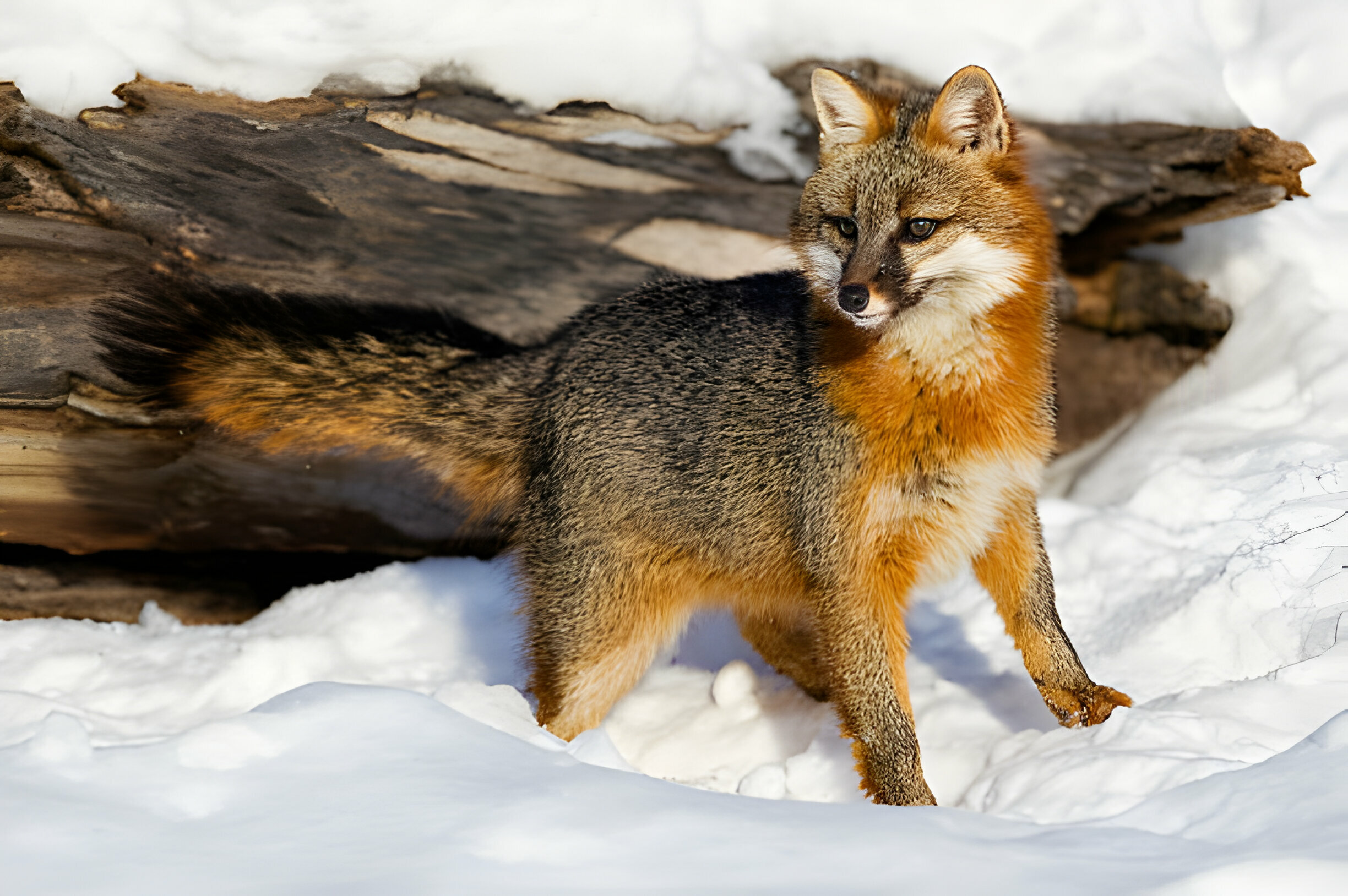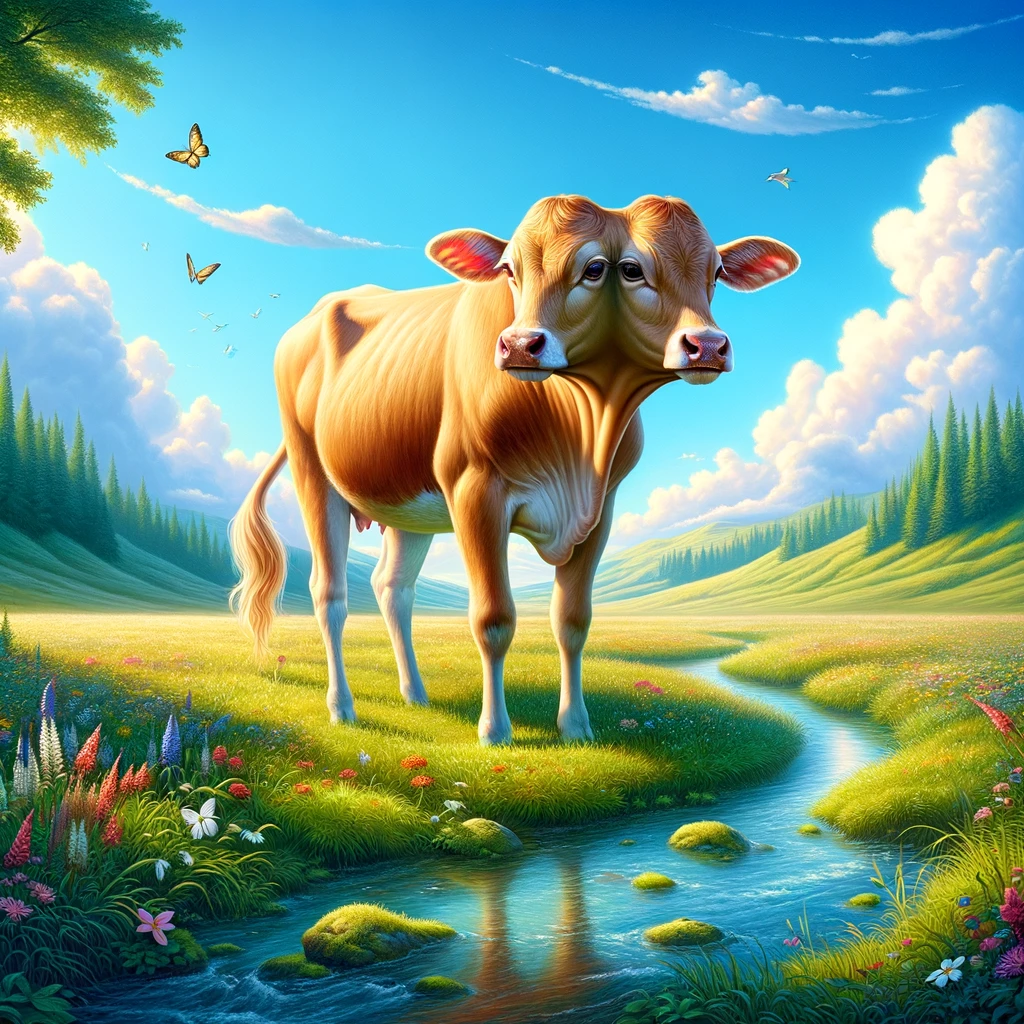Table of Contents
Canadian Marble Fox: a unique, real animal with a captivating appearance and complex care needs. Perfect for readers and Google a like.
The Canadian Marble Fox, a unique color variation of the red fox, captivates with its striking appearance. Originating from selective breeding, this fox combines the wild essence of its species with a distinct, domesticated look. Surrounded by myths and misconceptions, it stands as a testament to nature’s diversity, yet challenges the idea of conventional pet ownership with its complex care requirements. This profile aims to unravel the mystery, offering a glimpse into the life of this extraordinary creature.
Canadian Marble Fox Profile
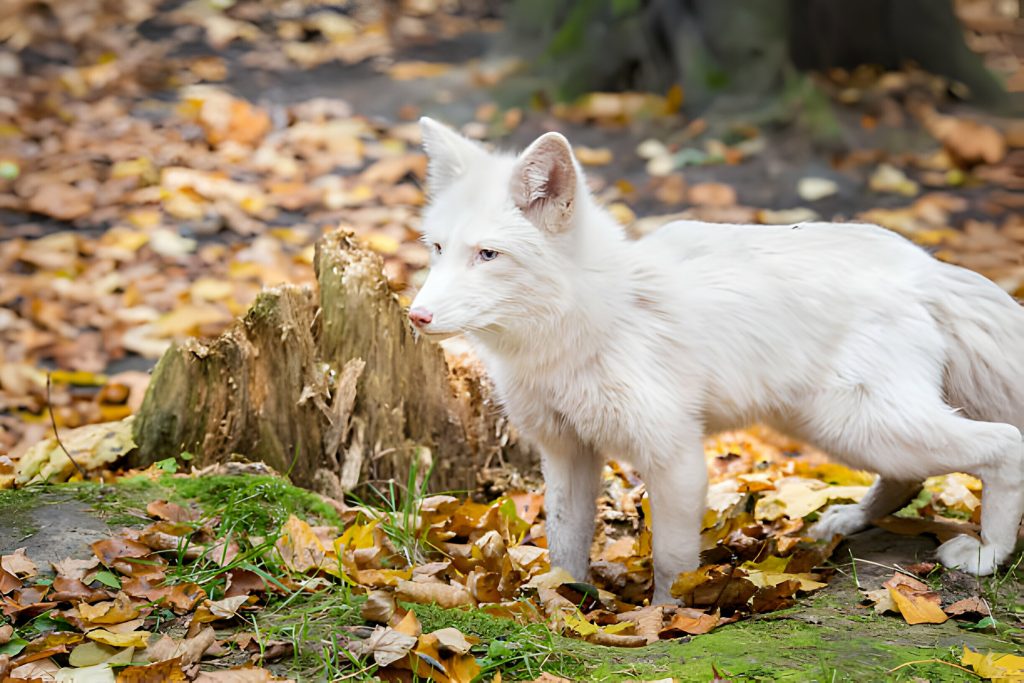
In the realm of internet fascination, the Canadian Marble Fox holds a place of intrigue and wonder, a creature so shrouded in mystery that its very existence is often debated. Yet, beyond the mists of doubt and misinformation, lies the truth of a truly remarkable animal that captivates the imagination.
Origin and Identity
The canadian marble fox dog is a testament to nature’s palette, a color morph of the common red fox, Vulpes vulpes, birthed from the shadowy beauty of the melanistic Silver Fox. Through the meticulous art of selective breeding, this fox wears a domesticated guise, yet beneath its striking coat lies the untamed spirit of the wild.
Misunderstood Marvel
The internet’s portrayal of the Canadian Marble Fox is a labyrinth of falsehoods and exaggerations. Contrary to popular belief, this fox is not a distinct species or a hybrid but a unique expression of the red fox’s natural genetic diversity. Its roots trace back to Norway, where selective breeding for its mesmerizing fur began, challenging the common misconceptions of its origin and nature.
The Reality of Domestication
Despite its domestic appearance, the canadian marble fox cat or dog embodies the essence of its ancestors—intelligent, agile, and, indeed, challenging to keep as a pet. Their captivating coloration is a product of human intervention, a trait not found in the wild, leading to a suite of characteristics often associated with domesticated animals, such as floppy ears and a smaller skull. However, these traits do not translate to a tame disposition suitable for home life.
A Cautionary Tale of Companionship
While the allure of owning such an exotic pet is undeniable, the reality is far from the idyllic companionship many envision. Foxes, by their very nature, are high-energy, independent, and require specialized care that goes beyond the capabilities of the average pet owner. Their complex needs, coupled with the legalities surrounding their ownership, make them a commitment far beyond what most are prepared for.
A Beacon of Beauty in the Wild
Despite the challenges they present, the Canadian Marble Fox remains a symbol of nature’s endless creativity and beauty. Their existence is a call to appreciate the wonders of the natural world from a distance, respecting the wildness that defines them. As we marvel at their beauty, let us also commit to the preservation and respect of their place in the natural order.
Canadian Marble Fox Facts Overview
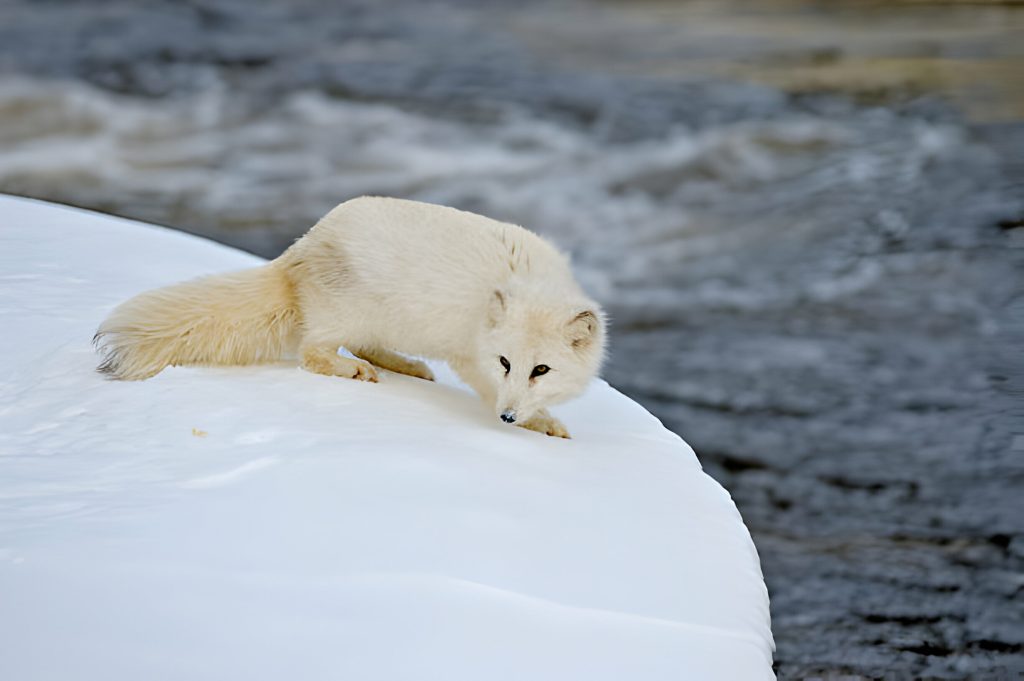
| Habitat: | Captivity |
| Location: | Across the Northern Hemisphere |
| Lifespan: | 10 years |
| Size: | Around 70cm (27 inches) long |
| Weight: | Up to 9kg (21lb) |
| Colour: | White with marble grey markings |
| Diet: | Omnivorous |
| Predators: | Dogs, coyotes, wolves, humans |
| Top Speed: | Unknown |
| No. of Species: | Not a species |
| Conservation Status: | Not listed |
The Canadian Marble fox is a color morph of the common red fox, Vulpes vulpes.
It seems to have come from a melanistic version known as the Silver fox, which is a rare, dark mutant, favoured for its fur in the 1940s.
A lot of selective breeding has gone into making them, so they’ve become domestic-looking, but they’re still fox-like when it comes to looking after them.
Smart, agile and destructive. So they make terrible pets!
Interesting Canadian Marble Fox Facts
1. They’re probably Norwegian
1. They’re Probably Norwegian
The story of the Canadian Marble Fox, while cloaked in the mystique of its name, begins far from the Canadian wilderness, likely in the snowy expanses of Norway. This striking creature is not a species in its own right but a distinctive color morph of the common red fox, Vulpes vulpes. Its unique coat, characterized by mesmerizing swirls of white and black, is the result of selective breeding, potentially intertwined with the genes of the melanistic variety known as the silver fox.
The genesis of the marble fox’s enchanting coloration can be traced back to a deliberate genetic mutation, akin to the natural processes that give rise to the dark coats of some leopards. Historical records suggest that the marble fox made its first documented appearance in a Norwegian fur farm, the product of a silver fox litter born in 1945. This was a time when the demand for unique fur was high, and breeders were experimenting with fox genetics to produce animals with novel and appealing fur patterns.
The Norwegian origin story of the marble fox highlights not only the human influence on the natural world but also the unexpected beauty that can emerge from such interactions. However, it’s important to remember that despite their captivating appearance, marble foxes remain genetically and behaviorally similar to their wild ancestors, embodying the spirit of the red fox lineage from which they descended.
2. What it isn’t
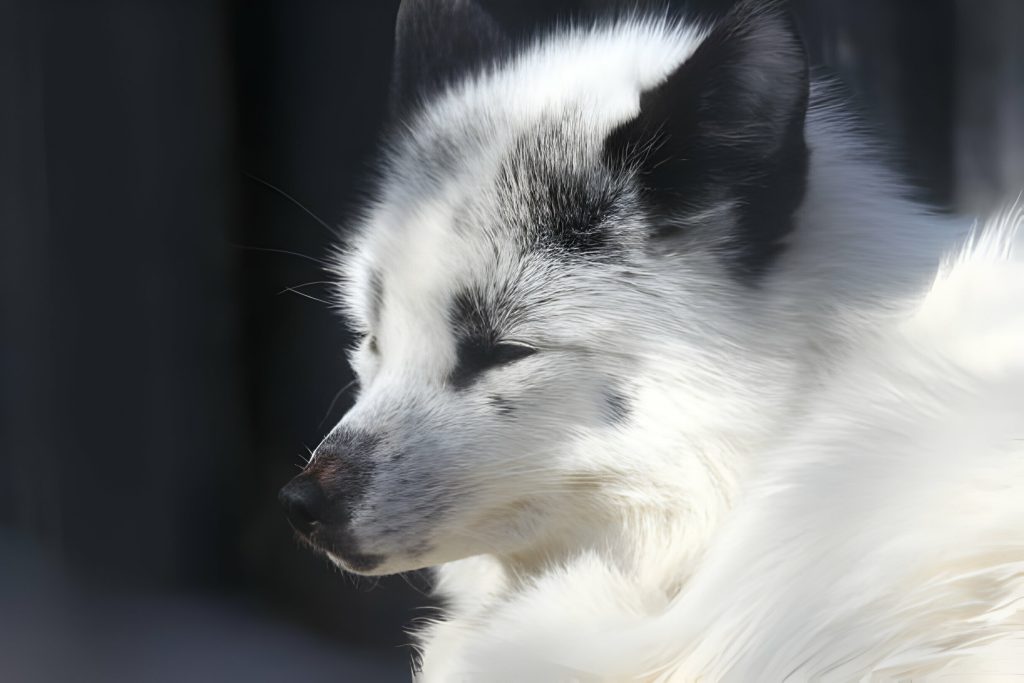
This animal is one of the most misrepresented on the internet. There’s so little reliable information and plenty of entirely false claims. Here are a few:
- Despite the name, these are a different species than the Arctic fox, which is Vulpes lagopus, and not related.
- It’s also commonly referred to as a hybrid, which isn’t accurate because both of its parents are the same species.
- Some sources change the species name halfway through the article, some use photos of what is clearly a breed of dog, and there are people on Facebook passing around a photo of a fluffy toy and claiming that’s a marble fox.
- One video suggests there are only a few thousand left in the wild, and they’re important to the ecosystem and an endangered species; none of which is true. While there were breeders in Canada, there’s nothing natively Canadian about this fox.
In the vast expanse of internet lore, the canadian marble fox adoption occupies a nebulous space, often shrouded in misconceptions and outright fabrications. Despite its name, this animal is not a separate species, nor is it a mysterious hybrid of foxes. It is, in essence, a color morph of the common red fox, Vulpes vulpes, distinguished not by its genetics but by its strikingly unique coat pattern. This distinction is crucial in understanding what the Canadian Marble Fox truly represents in the natural world.
Contrary to popular belief, the Canadian Marble Fox bears no relation to the Arctic fox, Vulpes lagopus. The confusion likely stems from its visually striking appearance, which could superficially link it to the snowy habitats of the Arctic fox. However, genetically and behaviorally, the two are worlds apart.
The internet’s portrayal of the are canadian marble fox legal to own as a hybrid or a distinct species leads to a significant amount of misinformation. Some sources may even alter the species name mid-discussion or use images of entirely different animals to represent this fox. Moreover, the proliferation of photos depicting plush toys or dogs as marble foxes adds layers of confusion, distancing the public from the truth of this animal’s existence.
Another myth to dispel is the notion of the Canadian Marble Fox as an endangered species vital to the ecosystem. While their unique fur pattern makes them a subject of interest and sometimes, unfortunately, commodification, they are not recognized as a separate conservation entity. Their status reflects that of the wider red fox population, which, while facing challenges, is not immediately endangered.
3. Their coloration is a product of domestication
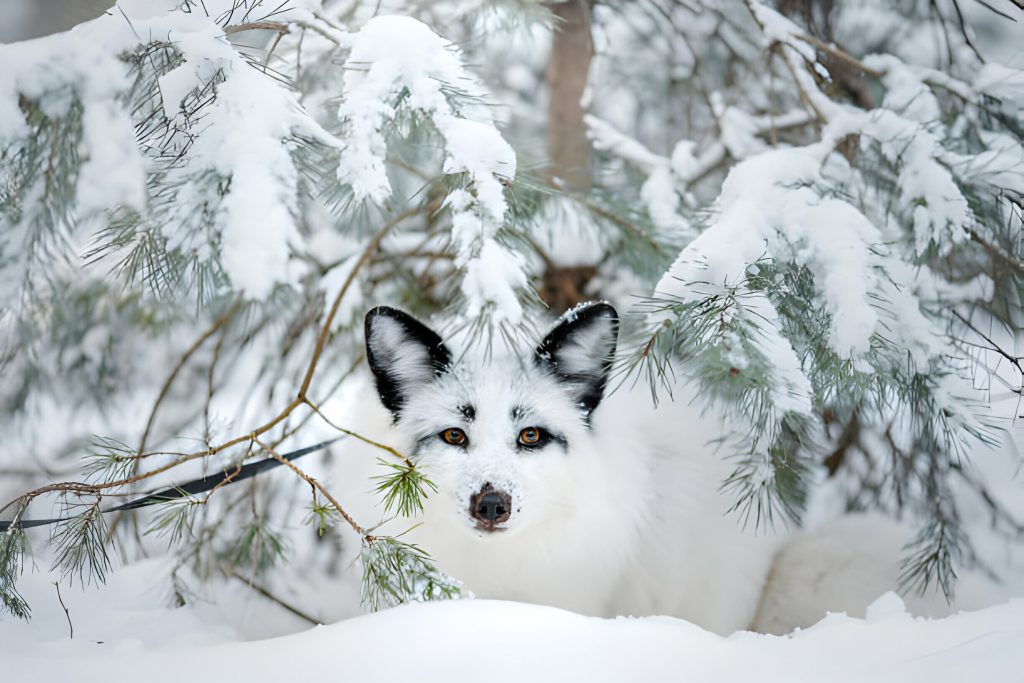
The mesmerizing coloration of the are canadian marble foxes dangerous, a tapestry of white and black dappled fur, is not a whimsy of nature but a direct result of human intervention through selective breeding. This distinctive coat, which sets them apart in the animal kingdom, is a clear indicator of their domesticated lineage, tracing back to deliberate genetic selection aimed at achieving such aesthetic qualities.
The process mirrors the domestication journey of other animals, where specific traits are magnified or diminished based on human preferences. In the case of the marble fox, breeders capitalized on the genetic mutations that produce their unique fur patterns. Such mutations are akin to those seen in other domesticated animals, where selective breeding has led to a variety of physical and behavioral traits divergent from their wild counterparts.
This phenomenon, sometimes referred to as “Domestication Syndrome,” is characterized by a suite of changes including reduced aggression, changes in physical appearance, and, in many cases, alterations in coat color and pattern. The marble fox’s striking appearance is a textbook example of this syndrome, showcasing how domestication can lead to significant changes in an animal’s phenotype, or observable characteristics.
Interestingly, the traits associated with domestication, such as the marble fox’s unique coloration, often come with unintended consequences. For example, the same genetic factors that affect fur color can also influence behavior and physiology, leading to a more docile but less adaptable animal in the wild. This interplay between aesthetics and genetics underscores the complex relationship between humans and the animals we choose to domesticate.
4. They don’t make good pets!
Despite their enchanting appearance and the allure of owning a unique animal, Canadian Marble Foxes are far from ideal household companions. This stems not only from their complex care requirements but also from their inherent wild instincts, which are ill-suited to domestic life.
Firstly, these foxes are high-energy animals that demand extensive mental and physical stimulation. Their agility and intelligence, while fascinating in a wild setting, translate to a tendency for destructive behavior when confined to the spaces of a typical home. The need for specialized enclosures and diets further complicates their care, making them a challenging commitment for the average pet owner.
Moreover, the socialization process for marble foxes is profoundly different from domestic dogs or cats. While they can form bonds with humans, their loyalty and behavior are unpredictable. They possess a natural wariness and independence that cannot be fully domesticated, leading to potential safety concerns for families and other pets.
Another significant factor to consider is their vocalization and scent marking. Foxes communicate with a range of sounds that can be distressing in a residential setting. Their scent marking is a natural behavior for territory definition but is considered highly undesirable indoors due to the potent odor.
Additionally, the legalities of owning a Canadian Marble Fox vary significantly by region, with many places requiring special permits or outright banning their ownership. Prospective owners must navigate a complex legal landscape, which often includes securing licenses and proving the ability to provide appropriate care.
5. They’re Mostly Illegal
The allure of the Canadian Marble Fox, with its striking fur and exotic appearance, might tempt many into considering it as a pet. However, the legal landscape surrounding the ownership of these animals is both complex and restrictive, serving as a significant barrier for those wishing to welcome them into their homes.
In many jurisdictions, the canadian marble fox photos falls under the category of wildlife, which is subject to stringent regulations. These laws are designed to protect both the animals and the public, acknowledging the challenges and potential dangers of keeping wild or semi-domesticated species in a domestic setting. As a result, in numerous countries and several states within the US, owning a marble fox as a pet is outright forbidden without a special license.
Obtaining a license to keep a marble fox is no small feat. It often requires demonstrating a thorough understanding of the animal’s needs, including their diet, behavior, and habitat requirements, as well as proving the availability of veterinary care experienced in dealing with exotic species. Furthermore, prospective owners must ensure their living arrangements comply with legal standards for housing such animals, which can be prohibitively expensive and complex.
The restrictions on ownership are not arbitrary. They reflect a broader understanding of the implications of keeping wild animals as pets, which can include threats to native wildlife, risks of disease transmission, and the ethical considerations of removing animals from their natural habitats or breeding them for specific traits. These laws also indirectly address the issues associated with the exotic pet trade, which can contribute to animal suffering and endangerment.
In light of these considerations, the dream of owning a canadian marble fox as a pet is often just that—a dream, curtailed by legal and ethical realities. The emphasis on protection and conservation over personal desire highlights a growing awareness of our responsibility towards wildlife and the importance of preserving these magnificent creatures in their natural environments, rather than in our living rooms.
Canadian Marble Fox Fact-File Summary
Scientific Classification
| Kingdom: | Animalia |
| Phylum: | Chordata |
| Class: | Mammalia |
| Order: | Carnivora |
| Family: | Canidae |
6. The Canadian Marble Fox: A Portrait of Beauty
The Canadian Marble Fox stands as a beacon of natural artistry and beauty, captivating the hearts of all who glimpse its unique appearance. This fox, with its marbled coat of white, black, and gray, is a living testament to the breathtaking diversity of the animal kingdom. Found in the northern reaches of Canada, this creature embodies the rugged elegance of the wild landscapes it inhabits.
The allure of the marble canadian fox lies not only in its striking visual appeal but also in its adaptability and resilience. Thriving in diverse habitats, from dense forests to the open tundra, it showcases the remarkable versatility of the red fox species. Its diet is equally varied, encompassing everything from small mammals and fish to berries and insects, demonstrating the fox’s opportunistic nature and its vital role in the ecosystem.
Yet, despite its beauty and adaptability, the real canadian marble fox remains shrouded in mystery, a rare jewel within Canada’s vast natural heritage. With a population that is believed to be quite small, this fox faces the challenges of habitat loss, hunting, and disease—threats common to many wildlife species yet intensified by the fox’s limited numbers and specific environmental needs.
The Canadian Marble Fox is not just an animal; it’s a symbol of the wild beauty that exists in the less-traveled corners of the world. Its presence reminds us of the importance of conservation efforts and the need to protect the fragile ecosystems that house such extraordinary creatures. By preserving their habitats and respecting their wild nature, we ensure that future generations can continue to marvel at the beauty of the Canadian Marble Fox and the rich biodiversity of our planet.
In essence, theadorable canadian marble fox is a reminder of the intricate connections between all living beings and the environments they inhabit. It challenges us to appreciate the natural world with a sense of wonder and responsibility, recognizing that beauty such as this is not merely to be admired, but cherished and protected.
Final Thoughts
The Canadian Marble Fox, with its ethereal beauty and captivating presence, embodies the complex relationship between humans and the natural world. As we unravel the layers of myth and misconception surrounding this unique creature, we are reminded of the broader implications of our fascination with exotic animals. While the allure of the marble fox’s striking appearance is undeniable, it brings to light important considerations about domestication, wildlife conservation, and ethical pet ownership.
FAQs:
Do Canadian marble foxes exist?
Yes, Canadian marble foxes exist but are not a separate species. They are color morphs of the red fox, selectively bred for their distinctive white and black marbled fur.
What is the Canadian fox that looks like a cat?
The Canadian fox that resembles a cat in some aspects is likely the marble fox, due to its fluffy coat and unique coloration, but it’s a color variant of the red fox, not a cat-like species.
What is the name of the marble fox?
The marble fox is commonly referred to as the Canadian Marble Fox, a color morph of the red fox known for its distinctive marbled white and black fur.
What are some facts about Canadian foxes?
Canadian foxes are adaptable, widespread across Canada, and include species like the red fox and Arctic fox. They play key roles in ecosystems as predators and are known for their intelligence and resourcefulness.

